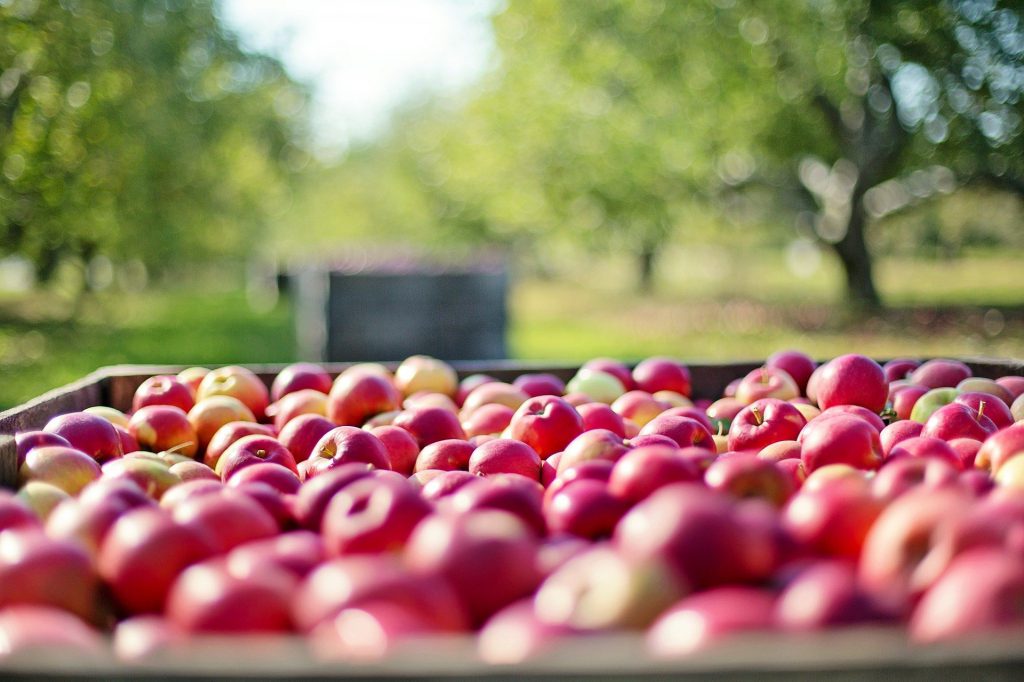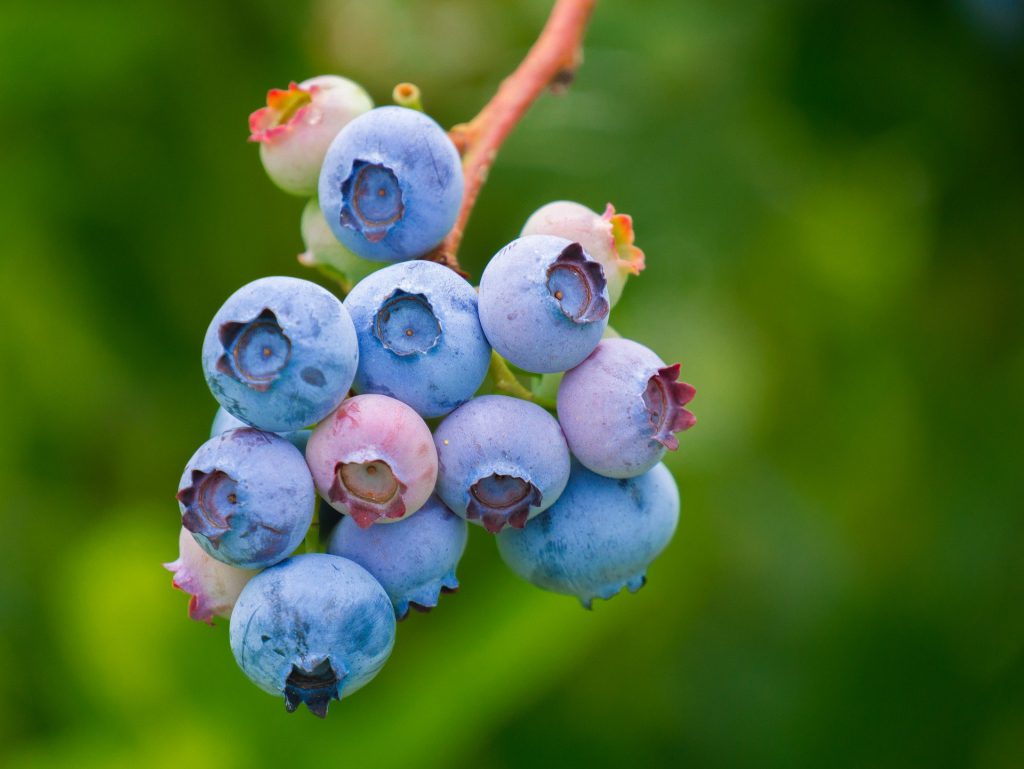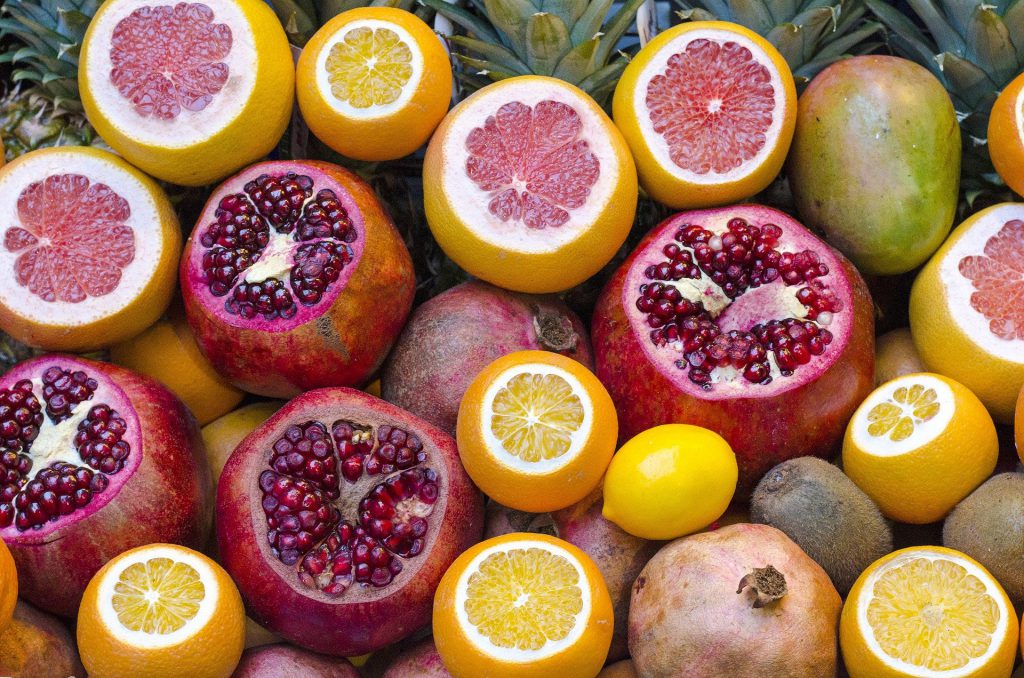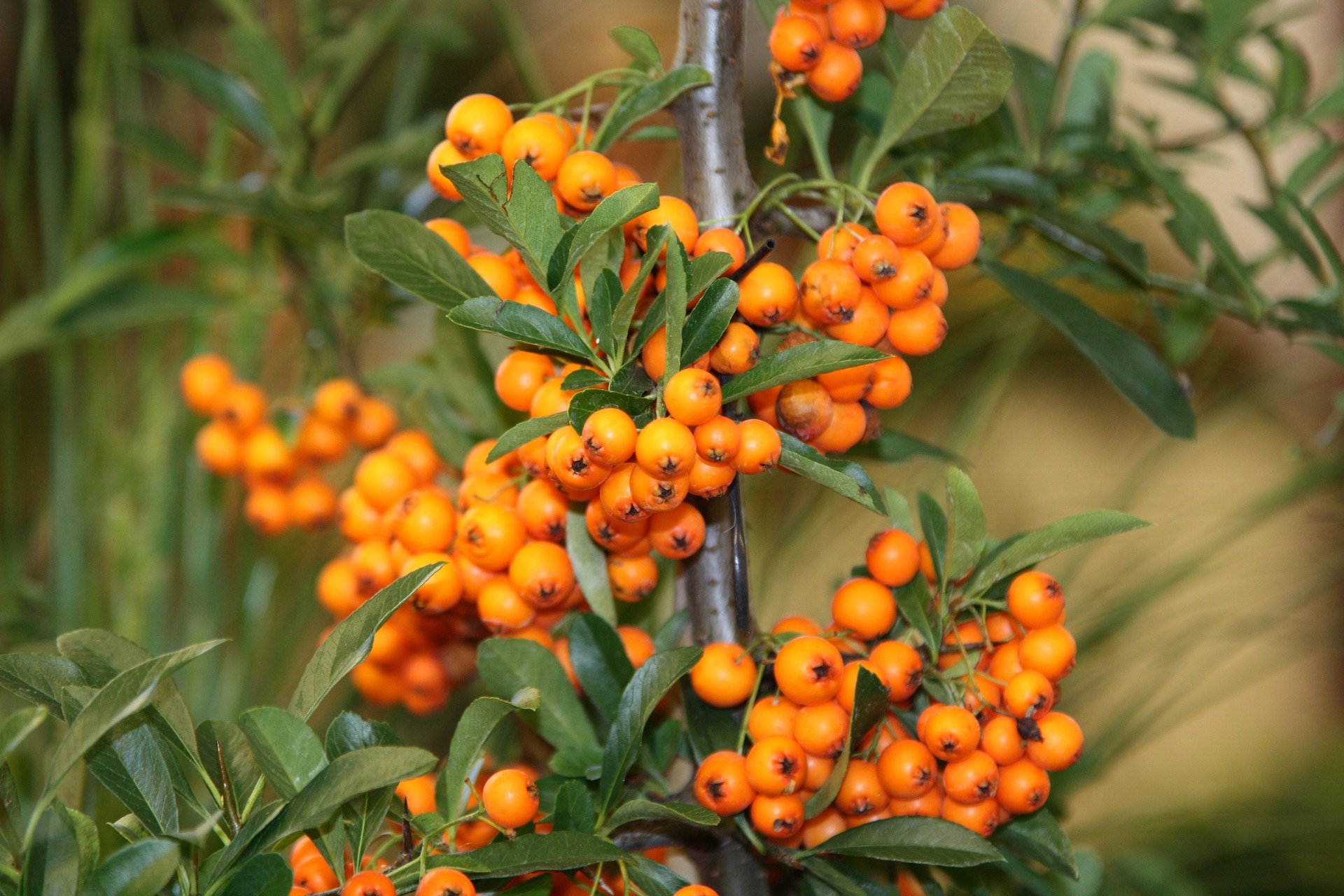To support your digestion, protect your cells, and boost your immune system
In a way, it’s impossible to determine which types of fruit are the healthiest. There’s so much variation in fruit, and different types are beneficial for different reasons. From the antioxidant-rich blueberry to fiber-rich apples and vitamin C-packed pineapples, various types of fruit can enhance our diets, lives, and moods.
However, in this blog, we’ll explore a few of the most notable health boosters. We’ve consulted some favorite nutrition experts and the latest developments in science to provide insights. What makes certain types of fruit so healthy? Here, we offer you an overview to make your next visit to the organic greengrocer a bit easier. We’ll look at different properties, such as cell protection, digestive support, and contributions to a strong immune system. Join us and discover which types of fruit can enrich your life and health.

What Makes Fruit Healthy?
Before delving into our list of the healthiest types of fruit, let’s provide you with some guidance to make informed choices. What are the characteristics that make certain types of fruit healthier than others?
1. Fiber and Sugars
In general, it’s good to choose varieties with high fiber content and not too much sugar, says dietitian Jessica Cording [1]. She also advises that fruit is best enjoyed in combination with a balanced meal or snack containing proteins and fats.
Fiber is an essential nutrient. Apples, bananas, raspberries, and mangoes all have high fiber content. Berries generally have low sugar content and high fiber content, making them an excellent choice.
2. Color: The Deeper, the Better
The color of fruit indicates the types of antioxidants and phytonutrients it contains. Apricots contain beta-carotene; watermelon and guava contain red lycopene. Purple anthocyanin is found in blackberries, cherries, and blueberries, while green chlorophyll is present in kiwis.
In soft fruits with peel or husk, such as apricots, cherries, and blueberries, most of these nutrients are found in the skin. The skin acts as a protective layer for the fruit, where these phytonutrients function as natural protection against factors like UV light. In general, the deeper the color, the higher the amount of antioxidants and the healthier the fruit.
3. Embrace the Sour
Juist die vruchten die een beetje een scherpe, wrange of zure smaak hebben zijn vaak de beste vrienden voor je gezondheid. Denk aan de wrangheid van de granaatappel, het zure en bittere van de grapefruit en het opwekkende zuurtje van een framboos. Volgens Mindbodygreen zou je deze zuurheid kunnen zien als een beschermingsmethode van de vrucht zodat de potente voedingsstoffen in de vrucht niet door elk willekeurig dier naar binnen geslokt worden. [2]
Fruits that have a slightly sharp, tart, or sour taste are often your best friends for health. Think of the tartness of pomegranate, the sourness of grapefruit, and the invigorating tang of a raspberry. According to Mindbodygreen, you can view this tartness as a protective mechanism of the fruit to prevent the potent nutrients from being consumed by just any creature [2].
4. Variety is the Spice of Life
Although we’re providing you with a list of 10 here, keep in mind that according to many nutrition experts, variety is ultimately most important [3]. Each type of fruit contains different antioxidants and various types of fiber. So, don’t stick only to your standard preferences—explore, rotate, and vary. This list is mainly meant as a guide and a pointer, but there’s no need to forget about many fruits that aren’t listed here.
What are the Healthiest Types of Fruit?
Despite what we mentioned above about the importance of variety and diversity, we still want to give you an overview of which types of fruit truly stand out. We hope this list will help you choose the most promising types of fruit to support your health every day.
1. Blueberries
On almost every list of healthy fruits you’ll find online, blueberries rank near the top. In the culture of certain Native American tribes, blueberries were considered a special plant: a gift from the Great Spirit to contribute to our overall health. In contemporary science, it’s also acknowledged that blueberries can be one of the most beneficial additions to your diet. If you consider the tip mentioned above, you’ll know that the more acidic small wild blueberries are your best choice: they are more sour and darker in color, thus packed with even more antioxidants.
These small berries are bursting with antioxidants and phytonutrients, and they also contain significant amounts of vitamin K and manganese. Among all types of fruit, berries have the highest fiber content per gram: with 8 grams per cup, you’re getting one-third of your daily fiber requirement.
Blueberries are also highly versatile: use them to add a sweet touch to your salad, incorporate them into baked goods or juices, or enjoy them raw in your yogurt or as a snack.

2. Grapefruit
Grapefruit also ranks high on many lists. Like other citrus fruits, grapefruit provides a significant amount of vitamin C, making it an ideal partner for supporting the immune system. Additionally, vitamin C helps your body neutralize free radicals and supports your energy levels.
Although the flesh of citrus fruits contains the most vitamins and minerals, the peel is often rich in other phytonutrients and fibers. When making a juice with grapefruit or any other citrus fruit, including the peel in the juice can be beneficial.
3. Cranberries
The story goes that in 1845, a ship lost a barrel of cranberries, which washed ashore on Terschelling. A beachcomber thought he had found a valuable barrel of wine, but when he discovered that it contained only berries, he left it behind, allowing the berries to spread throughout the island.
If only that beachcomber had known what he was missing! The cranberry is a true treasure in terms of nutrition, packed with vitamins and minerals. It’s especially rich in vitamin C, which plays a role in protecting our bodies and supporting a strong immune system. Moreover, vitamin C helps maintain healthy skin and enhances the absorption of iron from your diet.
4. Goji Berries
In recent years, goji berries have rightfully earned their place among superfoods. The small red berry, actually related to tomatoes, has been used for centuries in Chinese herbal medicine for its unique qualities. The berry can support your overall health in various ways and contribute to maintaining a vital and fit body.
Scientific research indicates that goji berries, due to their high calcium content, also contribute to a healthy digestive system. Research also highlights the extensive palette of antioxidants in goji berries, which collectively can significantly support the protection of your body against oxidative damage [4].
5. Raspberries
Alright, let’s go for another berry. By now, it’s clear that red and purple berries are among the healthiest types of fruit. Take raspberries, for instance. Like many other wild berries, raspberries are rich in fiber, low in sugar, bursting with antioxidants, and filled with vitamins and minerals.
Along with strawberries and pomegranates, raspberries are the only food sources of the phytonutrient group ellagitannins. These complex molecules are also found in a few plants used in Chinese herbal medicine.
A special variety is the black raspberry. Remember what you read above about “the deeper the color, the healthier the fruit”? A black raspberry (actually very dark purple) contains a unique amount of antioxidants that together seem to be a potent tool for protecting cells and tissues from damage.
6. Pomegranate
Pomegranate is another impressively deep-red fruit. In traditional healing cultures, plants often have a beneficial effect on the organs they resemble. Perhaps it’s no wonder that the shiny blood-red pomegranate, due to its high vitamin B6 content, contributes to red blood cell production.
Moreover, pomegranate contains more antioxidants and phytonutrients than green tea and red wine, including the acclaimed anthocyanins, ellagitannins, and hydrolyzable tannins.

7. Elderberry
Elderberry is the only fruit on this list that you can’t eat raw because its seeds contain toxic substances. However, we use it in small amounts in our immunity-boosting shot, Protect: during juicing, the seeds are separated by the slow juicer’s filter.
Despite some parts of the elderberry shrub being toxic, it has been considered highly healthy for many millennia. The elder was always associated with a certain female nature spirit, and it was said that if you sleep under an elder on midsummer night, fairies will befriend you. Elderflower contains an array of special phytonutrients and is used to make delightful lemonades and floral wines. Black elderberries are one of the most potent supporters of the immune system due to their high vitamin C content, among other factors.
8. Sea Buckthorn Berry
Similar to elderberries, wild sea buckthorn berries are abundant in the Dutch natural landscape. Particularly in sandy areas like the Wadden Islands, the Veluwe, and the coastal region, you can find the prickly plant with bright orange berries. The berries are watery, very sour, and grow by the thousands on each plant—an abundance indeed.
This sourness is attributed to their exceptionally high vitamin C content. Sea buckthorn berries come with an impressive list of qualities, such as supporting the immune system and contributing to the health of your blood vessels. Moreover, vitamin C helps protect your cells from oxidative damage and supports skin health.
9. Apple
Next to all these precious berries, apples might seem like a rather plain fruit. Nevertheless, apples have a lot to offer, not least the fact that they are highly transportable and storable. This contributes to the fact that you can enjoy apples nearly year-round without incurring excessive environmental costs for transportation or storage and without the need for chemical preservatives.
Apples are also true health allies. They contain the fiber pectin, a unique type of fiber [5]. Pectin is mainly found in the skin, so when drinking apple juice, it’s best to include the skin in the juice.
10. Hawthorn Berry
The hawthorn berry is also a bit of an outlier on this list. Although the fruit is found all over Europe and America in early autumn, hardly anyone knows about its health benefits. Even in popular superfood lists, you rarely see hawthorn shining. Yet it’s a powerful little berry: it’s packed with vitamin C, which helps maintain healthy blood vessels and supports a strong immune system.
Furthermore, hawthorn has been cherished by traditional herbalists and shamans for many generations. And, unlike the pricey raspberry and pomegranate, you can find this warm-hearted berry in large quantities for free along the road! Hawthorn is related to apples, and the “berry” is actually more of a very small apple in taste as well. You can eat the little apples raw or dry them to make tea.
Conclusion
You already knew that eating a lot of fruit is good for you. Hopefully, this article has further inspired you with the richness and variety that Mother Nature offers. From the precious pomegranate seed to the well-known apple and from the exotic goji berry to the elderberry in your backyard: all these types of fruit are great additions to enrich your daily yogurt bowl, lunchbox, or juice.

